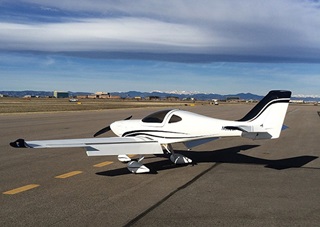 At a Sun 'n Fun press conference, George Bye, CEO of Aero Electric Aircraft Corporation (AEAC), reviewed his company’s progress with its Sun Flyer two-seat trainer. The Sun Flyer proof-of-concept aircraft, designed by Arion Aircraft LLC of North Shelbyville, Tennessee, will have its official rollout in “a couple weeks,” according to Bye. The first flight is expected in the second quarter of 2016, and the airplane will go on display at EAA AirVenture in July.
At a Sun 'n Fun press conference, George Bye, CEO of Aero Electric Aircraft Corporation (AEAC), reviewed his company’s progress with its Sun Flyer two-seat trainer. The Sun Flyer proof-of-concept aircraft, designed by Arion Aircraft LLC of North Shelbyville, Tennessee, will have its official rollout in “a couple weeks,” according to Bye. The first flight is expected in the second quarter of 2016, and the airplane will go on display at EAA AirVenture in July.
The airplane will be powered by a 135-horsepower/100-kilowatt Emrax 268 electric motor from Slovenia, driven by five South Korean, LG Chem lithium ion batteries (production airplanes will have seven batteries) and an array of wing-mounted solar cells. The 300-pound batteries have an energy density of 260 watts per kilogram—enough to sustain flight for three hours, Bye said. The solar cells generate two kilowatt-hours, and will continuously charge the batteries. Over a two- to three-day period, the solar cells alone should be able to completely charge a depleted set of batteries. The Bloomington Corp. of Orlando, which has purchased 30 Sun Flyers, is working on a national network of battery charging stations.
Bye said a total of 65 Sun Flyers have already been sold. AEAC plans to certify the airplane under FAR Part 21, which would obviate the need to seek light sport aircraft approval. Currently, LSA certification rules exclude electrically powered aircraft.
The two-seater will have a maximum takeoff weight of 1,654 pounds, a 440-pound payload, a 36-foot wingspan, and a 45-knot stall speed; be approved for day and night VFR operations; and cost just $1 per hour to operate.
“Electric aircraft have turned the corner,” Bye said, “in terms of motor, battery, structure, and aerodynamics.” Bye sees electric aircraft as the principal way to rejuvenate the sagging number of student pilot starts, saying “if we get this right, the economics will change.”



